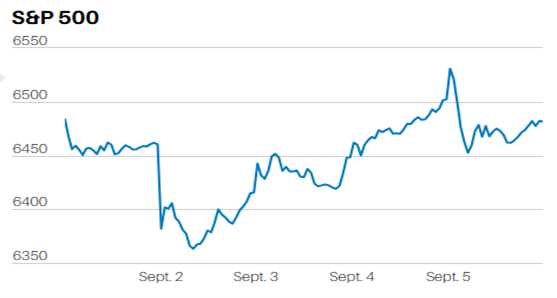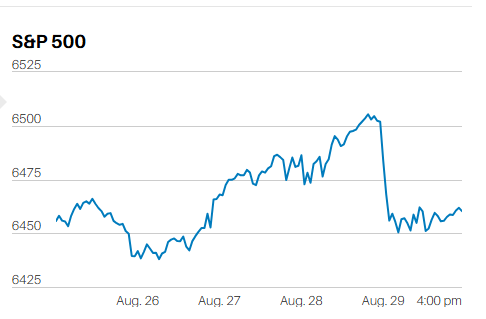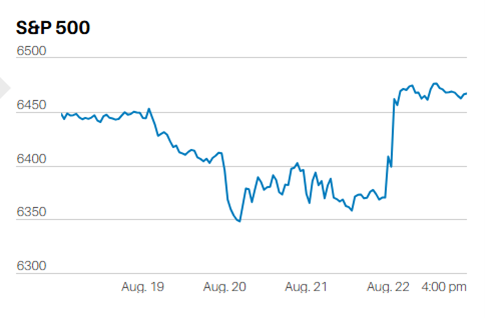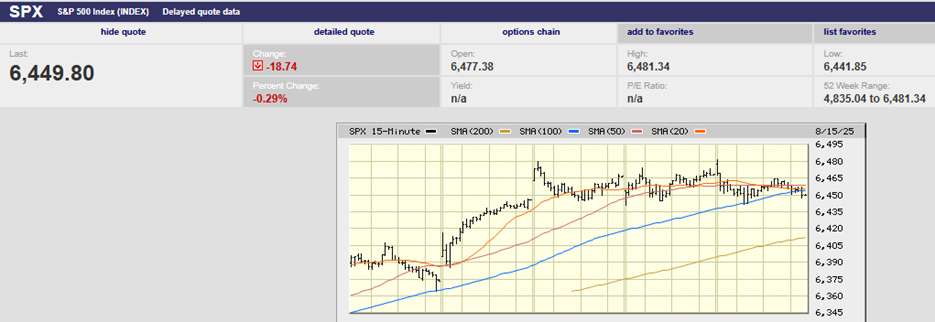Bitcoin and the other cryptocurrencies are not investments

Market Update
The S&P 500 rose 2.0% last week to close at 4697.53. The index hit 4718.50 earlier on Friday, another record. The S&P 500 is up 9.9% since the 5.2% pullback in September. It is up 3.5% from the September 2nd high. Notably, the Russell 2000 small-cap index rose 6.1% last week. Small stocks are more closely tied to the U.S. economy. Even so, it is the largest stocks in the S&P 500 that are pacing the gains in the large-cap space. The S&P is up 5.1% in the last three weeks. The Invesco S&P 500 Equal Weight ETF rose only 3.6% during that period. Meanwhile, the Russell 2000 is up 7.4% during the last three weeks.
The ongoing stock market rally belies the fears expressed by investors in September. There were concerns over rising input costs and wages. It was believed that they were threatening corporate profit margins. It was thought that economic growth was stagnating even as inflation was rising. That talk all went away with the arrival of a new leg up in the bull market. Amazing how investor psychology can change on a dime depending on market performance. Most investors think that the news drives the stock market. A case can be made that the stock market drives the news.
There is little standing in the way of a strong finish to the investing year. Earnings are good. Monetary policy is easy. Fiscal policy is easy. The Federal Reserve managed not to rock the boat with its taper announcement on Wednesday. It is likely that the S&P 500 will continue to make new highs into year-end. Unless it doesn’t of course. Markets being markets, one should always expect the unexpected.
Norwood Economics is STILL expecting a 10% to 15% pullback in the next few quarters. But we’ve been forecasting that for close to a year now. It is unlikely to happen in 2021 at this point. A rocky start to 2022 is possible. It will depend to some extent on whether the economy starts accelerating once again or not. Many economists are calling for 4.0% to 5.0% GDP growth in 2022. It is hard to envision a bear market if that forecast is close to reality. Norwood Economics expects growth closer to 2.0% in 2022. An earnings correction is likely if our forecast comes closer to the mark.
Economic Update
The ISM manufacturing index was 60.8% in October down from 61.1% the prior month. Anything over 60% is considered strong. The ISM services index was 66.7% in October up from 61.9% the prior month. Both ISM indexes signal strength in the economy. The trade deficit was $80.9 billion in September up from $72.8 billion. The rising deficit partly explains the weaker Q3 GDP number. Declining net exports are a drag on U.S. GDP growth.
Productivity growth was a negative 5.0% in Q3, worse than the forecast negative 3.2%. Unit labor costs soared to an 8.3% increase in Q3 from a 1.1% increase in Q2. Rising unit labor costs are partly responsible for the biggest increase in U.S. inflation in 30 years. Companies must decide whether to absorb rising input costs or pass those costs along to consumers. Allowing margins to fall will threaten earnings. The large decline in productivity is in part due to supply constraints. The inability to get enough supplies on time is reducing production levels, according to MarketWatch. Hours worked increased 7% in Q3 but output only rose 1.7%.
The supply chain difficulties should resolve themselves over the next 12 months. Production levels will increase. Unit labor costs will fall. Much of the wage inflation pressure will subside, or at least that is the Federal Reserve's hope.
Payrolls rose 531,000, well ahead of the forecast. The prior two payroll numbers were revised up by 235,000. Job growth was strong, and the unemployment rate fell as a result to 4.6% from 4.8%. Strong job growth coupled with consumer Covid-19 savings makes it likely that consumers will continue to spend into the new year.
Speculation is Everywhere
I have students at Butler who own Bitcoin. They’re not sure what it is but they know it is going up in price. Norwood Economics serves as a plan advisor for twenty-plus 401(k) plans. Participants in those plans own Bitcoin and NFTs (non-fungible tokens) outside of their 401(k)s. They don’t really understand Bitcoin or NFTs but they want in on the action. Increasing numbers of plan participants are asking about access to cryptocurrencies in their 401(k) plan. Speculation is everywhere.
Bitcoin and the other cryptocurrencies are not investments any more than the dollar is an investment. The dollar is a medium of exchange meaning you can buy things with it. It is a store of value because it is relatively stable against a basket of goods and services. It is a unit of account because you can use it to compare the price of one good or service to another. Bitcoin is none of those things yet. It may end up as a store of value if it becomes less volatile. Same as a unit of account. It will probably never be a medium of exchange because it isn’t energy efficient. What Bitcoin and the other cryptocurrencies will never be is an investment.
Investments produce cash flow to their owners. Bonds are an investment because they pay interest to the lender. Stocks are an investment because they pay dividends, buy back stock, or reinvest earnings to grow them. Real Estate is an investment because it produces cash flow to owners. Gold, cryptocurrencies, and collectibles are not investments because they produce no cash flow. The owner only makes a profit if someone buys from them at a higher price than they paid. That is speculation. Anybody want to buy a tulip bulb?
NFTs are digital images that are guaranteed authentic with a certainty of ownership. NFTs can convey rights over digital goods as well, but not necessarily in every case. Rights to a digital image may allow the owner to generate cash flow. Most digital images won’t, and any cash flows generated for any digital image is likely uncertain and variable. Not exactly what you should be looking for in an investment. Buy a good company on sale that pays a nice dividend instead. It isn’t the casino of cryptocurrencies and NFTs, but it is much more profitable for almost everyone.
Regards,
Christopher R Norwood, CFA
Chief Market Strategist











